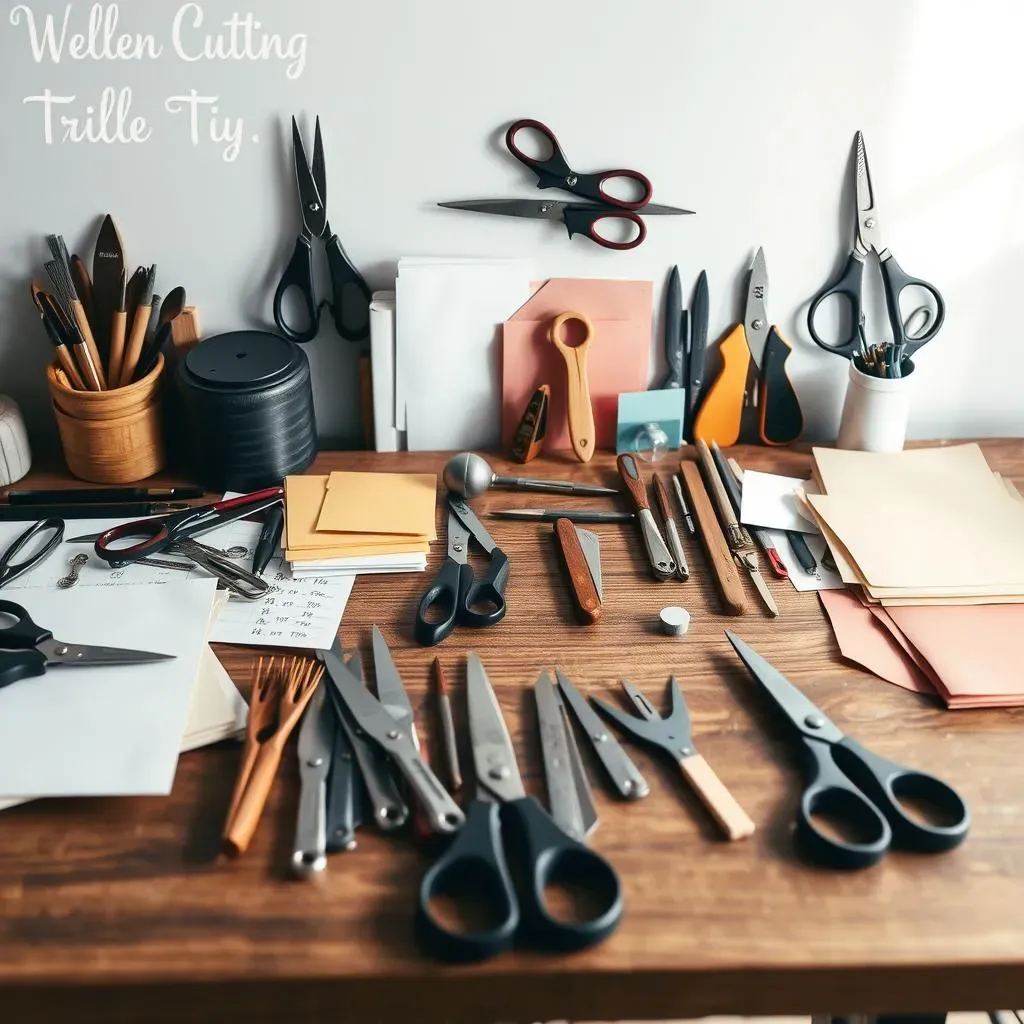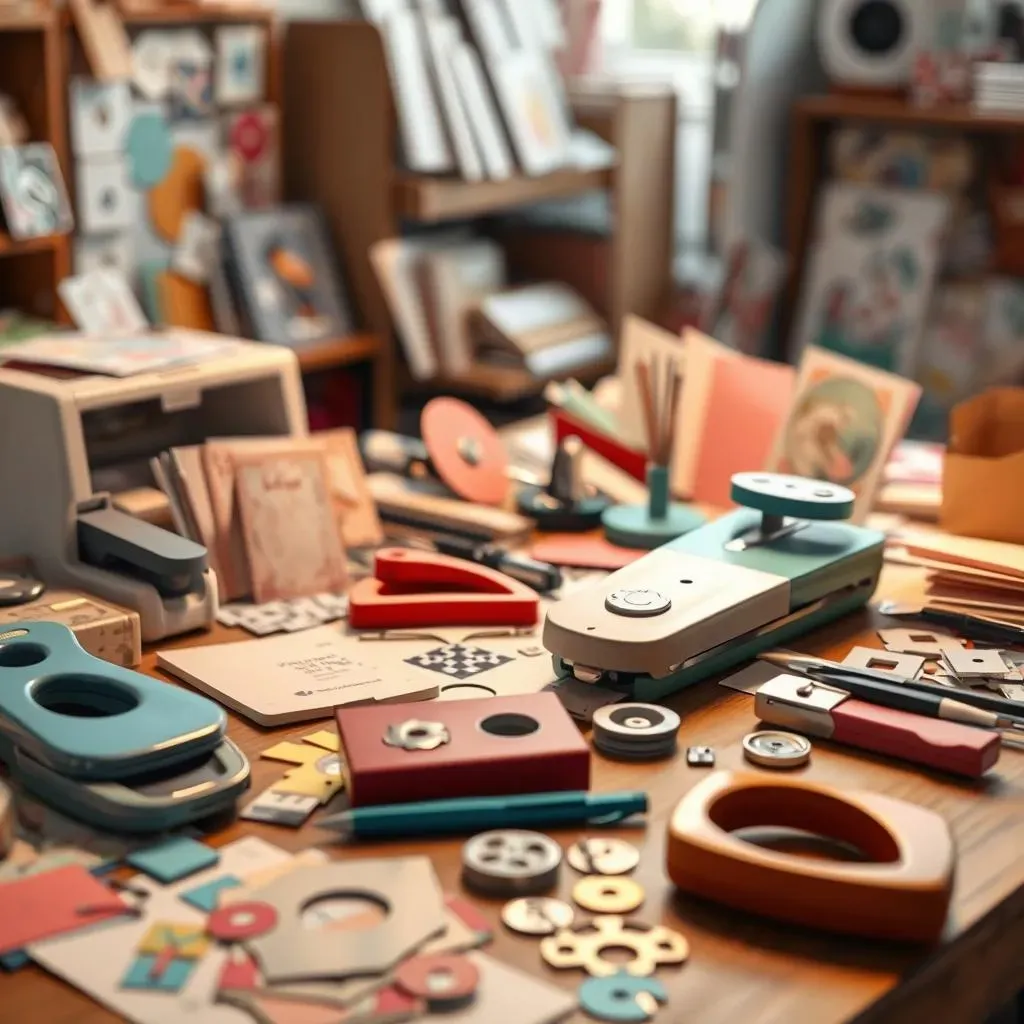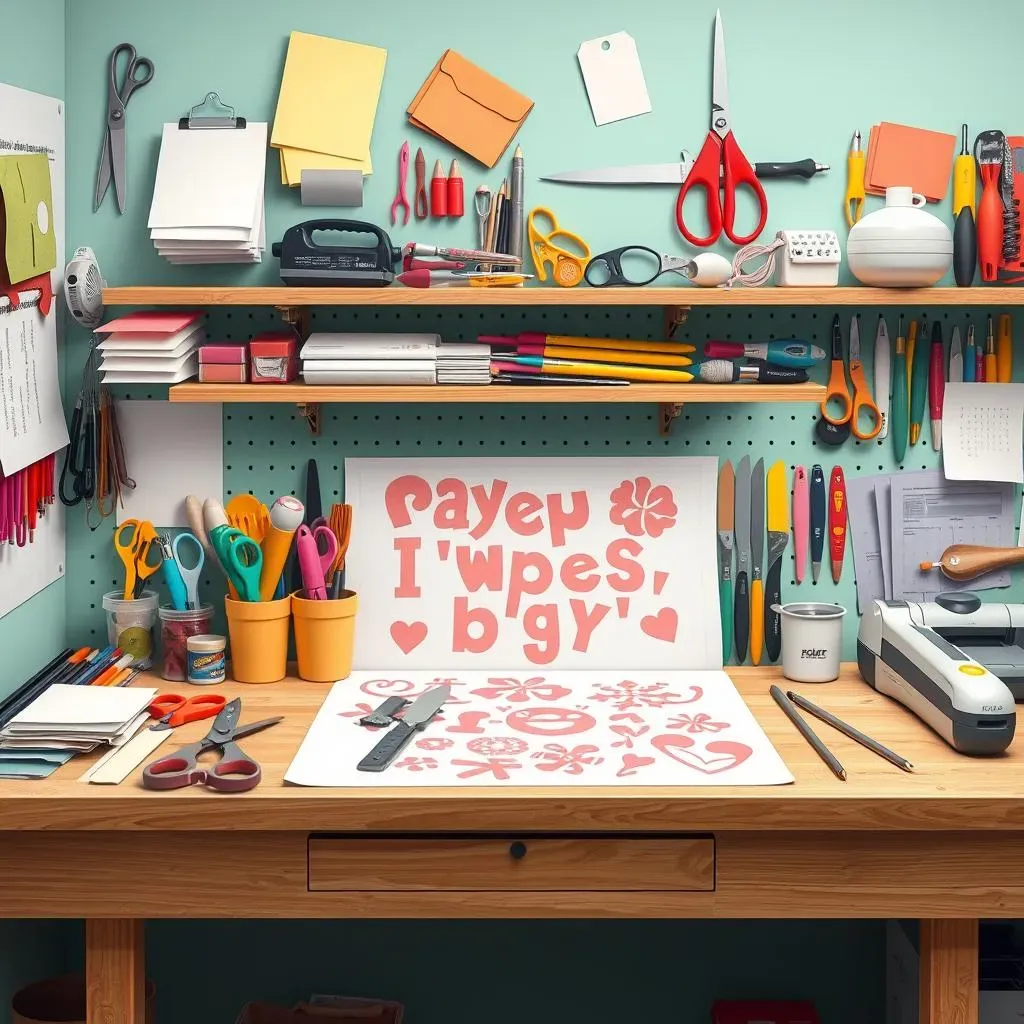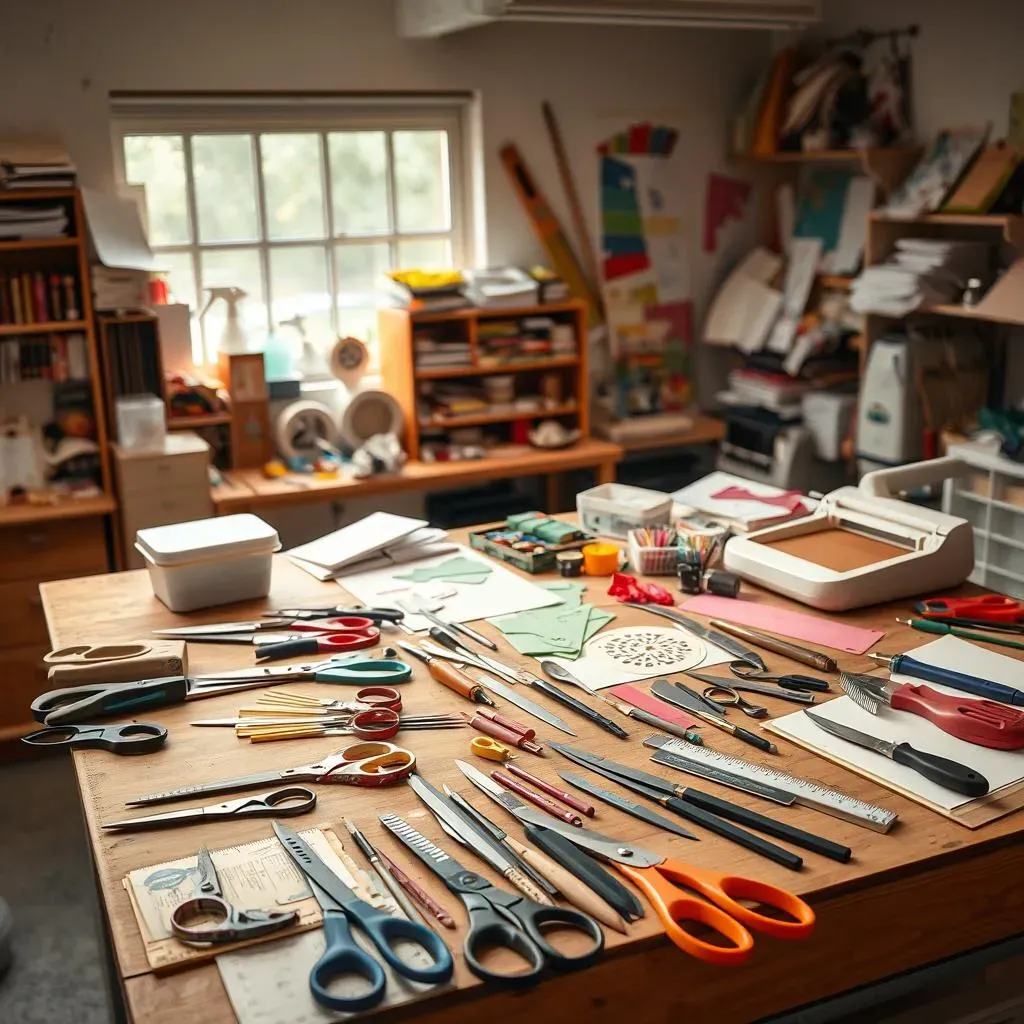Table of Contents
Ever wondered, "What is the tool used for cutting paper?" The answer, it turns out, isn't as simple as you might think! From the humble pair of scissors to sophisticated electric cutters, the world of paper-cutting tools is surprisingly diverse. This comprehensive guide will take you on a journey through the various tools available, exploring their unique strengths and weaknesses. We'll start with the basics – scissors, craft knives, and paper trimmers – perfect for everyday cutting tasks. Then, we'll move onto more advanced tools like rotary cutters and electric die-cutting machines, ideal for intricate designs and large-scale projects. We'll also cover specialized tools for specific needs, such as hole punches for creating unique shapes or embossing tools for adding texture. By the end of this article, you'll not only know the answer to "what is the tool used for cutting paper?", but you'll also be equipped to choose the perfect tool for any paper-cutting project, no matter how ambitious. Whether you're a seasoned crafter or a curious beginner, get ready to discover the world of paper-cutting tools and unleash your creativity!
Basic Paper Cutting Tools: Scissors, Knives, and Trimmers
Basic Paper Cutting Tools: Scissors, Knives, and Trimmers
Scissors: Your Everyday Cutting Companion
Let's start with the most familiar tool: scissors! They're versatile and perfect for most basic paper-cutting tasks. From trimming photos for a scrapbook to cutting out simple shapes for a kid's craft project, a good pair of scissors is your go-to. But not all scissors are created equal. Look for sharp blades that can cleanly slice through paper without tearing. For intricate cutting, consider a pair of smaller, more precise scissors. And remember to keep your scissors sharp! A dull blade will only frustrate you and lead to ragged edges. You might need different kinds of scissors for different tasks. For example, you may want to have a pair of heavy-duty scissors for thicker cardstock and a pair of smaller, more precise scissors for detailed work.
Choosing the right scissors is half the battle. For example, if you are cutting thicker cardstock, you will need a pair of heavier-duty scissors. If you are cutting intricate designs, you may want a pair of smaller, more precise scissors. And don't forget to keep your scissors sharp! A dull blade will lead to frustrating results. Check out our guide on essential paper-cutting tools for more tips.
Scissors Type | Best For |
|---|---|
General Purpose | Everyday cutting |
Embroidery Scissors | Intricate details |
Heavy-Duty Scissors | Thick cardstock |
Craft Knives and Utility Knives: Precision Cutting Powerhouses
For more precise cuts and intricate details, craft knives and utility knives are your best friends. These are great for creating clean lines, cutting out complex shapes, and generally being more precise than scissors. They are essential for paper crafts, especially when you're working on delicate details or need perfectly straight edges. Always use a cutting mat to protect your work surface and keep your blade sharp for the best results. Remember safety first; always point the blade away from yourself and use a ruler as a guide for straight cuts. A sharp blade is crucial for clean cuts, and a dull blade will only frustrate you.
When using a craft knife, it's essential to use a cutting mat to protect your work surface and to prevent accidental cuts. Also, remember that craft knives are sharp, so always handle them with care. It’s always a good idea to have multiple blades on hand. If you're working on a particularly detailed project, consider using a smaller blade for more control. For beginners, check out some beginner tutorials.
- Sharp blades are crucial
- Always use a cutting mat
- Practice safe handling
Advanced Paper Cutting Tools: Rotary Cutters and Electric Cutters
Advanced Paper Cutting Tools: Rotary Cutters and Electric Cutters
Rotary Cutters: Whizzing Through Paper
Rotary cutters are like little circular blades on a handle. They're amazing for cutting long, straight lines quickly and accurately. Think of them as super-powered pizza cutters for paper! They’re fantastic for cutting mats, fabric, and paper, making them a versatile addition to any crafter’s toolkit. You'll need a self-healing cutting mat to protect your work surface, and remember to always cut away from yourself. They're especially useful for scrapbooking, quilting, and other projects that involve lots of straight cuts. For precise cuts, use a ruler as a guide. A sharp blade is essential for clean cuts; a dull blade will make your work look ragged.
One of the best things about rotary cutters is their speed and efficiency. They can cut through multiple layers of paper at once, saving you a ton of time. However, they do require a bit of practice to master. Start with simple cuts until you get a feel for how much pressure to apply. Different blades are available for various materials and thicknesses. For more information on choosing the right paper, check out our guide on choosing the right paper.
Rotary Cutter Feature | Benefit |
|---|---|
Rotating Blade | Fast, efficient cutting |
Various Blade Sizes | Adaptability to different projects |
Ergonomic Handle | Comfortable use |
Electric Cutters: The High-Tech Solution
Now, let's talk about electric cutters. These are the powerhouses of the paper-cutting world. They use a motorized blade to cut intricate designs from paper, cardstock, and even fabric. Think of them as mini CNC machines for your craft projects. They're perfect for creating complex shapes, repetitive designs, and even custom-made stencils. Many electric cutters use computer software to design and cut your projects, making them incredibly versatile and precise. They often come with software that allows you to create custom designs. If you're serious about paper crafting, an electric cutter is a game-changer. They’re great for creating things like custom invitations, cards, and scrapbook embellishments.
Electric cutters are a significant investment, but the precision and speed they offer are worth it for many crafters. They can cut through multiple layers of material without tearing, and they can handle intricate designs with ease. However, it's important to choose a machine that's right for your needs and budget. There are many different models available, each with its own features and capabilities. For more advanced techniques, check out our guide on mastering paper-cutting machines.
- High precision
- Cuts intricate designs
- Suitable for various materials
Specialized Paper Cutting Tools: Punchers, Dies, and More
Specialized Paper Cutting Tools: Punchers, Dies, and More
Punching It Up: Hole Punches and More
Let's talk about hole punches! These aren't just for making holes in paper for binders anymore. There's a whole world of creative punches out there, from simple circle punches to intricate shapes like stars, hearts, and even custom designs. They're perfect for adding a little extra flair to your projects, making them ideal for scrapbooking, card making, and other paper crafts. A good quality punch will give you clean, precise holes every time, so don't skimp on quality. And always remember to use a sturdy surface to avoid damaging your work surface. These tools are great for adding decorative elements to your projects.
Beyond basic punches, you can find punches that create more complex shapes and patterns. For example, you could use a corner rounder punch to soften the edges of your cards or photos, or a decorative edge punch to add a unique border. And if you're feeling adventurous, you can even find punches that create intricate designs, like snowflakes or flowers. For more inspiration, check out our gallery of easy paper-cutting projects.
- Various shapes and sizes
- Creates decorative elements
- Adds unique flair to projects
Die-Cutting Magic: Unleashing Creative Potential
Now, let's talk about die-cutting. This is where things get really interesting. Die-cutting machines, like the Silhouette Cameo or Cricut Maker, use metal dies to cut intricate shapes and designs from paper and other materials. Think of them as high-tech cookie cutters for your crafting projects. You design your shapes on your computer and the machine does the cutting for you. This allows for incredible precision and speed, especially when you're making multiple copies of the same design. They're perfect for creating custom cards, scrapbook embellishments, and even personalized gifts.
One of the best things about die-cutting is the sheer variety of designs available. You can find dies that create almost any shape or pattern imaginable, from simple shapes to complex, multi-layered designs. And if you're feeling adventurous, you can even design your own dies! Die-cutting machines offer endless possibilities for creating unique and personalized crafts. For more detailed information on dies, check out our article on making paper-cutting designs.
Die-Cutting Feature | Benefit |
|---|---|
Precise Cutting | Clean, accurate shapes |
Variety of Dies | Endless design possibilities |
Customizable Designs | Personalized creations |
Choosing the Right Tool for the Job: A Practical Guide
Choosing the Right Tool for the Job: A Practical Guide
So, you've got a dazzling array of paper-cutting tools at your disposal. But how do you choose the right one for your project? It's all about matching the tool to the task, my friend! Think of it like choosing the right tool for a job in a workshop. You wouldn't use a hammer to screw in a screw, would you? Similarly, you wouldn't use delicate embroidery scissors to cut through thick cardstock. Let's break it down.
For simple, straight cuts on thinner papers, scissors are your everyday heroes. Need precise detail work? Craft knives give you the control you crave. For speed and efficiency on larger projects, especially those with straight lines, a rotary cutter is your new best friend. And for intricate designs and mass production of identical shapes, an electric cutter is the ultimate power tool. Consider the material's thickness, the intricacy of the design, and the number of cuts you need to make. Let's look at some examples.
- Thin paper, simple shapes: Scissors
- Thick cardstock, precise cuts: Craft knife
- Large quantities of straight cuts: Rotary cutter
- Intricate designs, multiple copies: Electric cutter
Let's say you're making a bunch of invitations. A rotary cutter would be fantastic for quickly cutting the cardstock to size. But for adding intricate details to each invitation, like a fancy corner or a delicate border, you might switch to a craft knife or even a die-cutting machine. It all depends on your specific needs and the level of detail involved. Don't be afraid to experiment and find what works best for you! Sometimes, a combination of tools will give you the best results.
Remember, the best tool is the one that helps you achieve your creative vision efficiently and effectively. Don't be afraid to experiment and try different techniques. And if all else fails, there's always the trusty pair of scissors to fall back on! Practice makes perfect, and soon you'll be a paper-cutting pro in no time! For more inspiration on choosing the right paper for your projects, check out our guide on choosing the right paper.
Project | Recommended Tool |
|---|---|
Cutting out simple shapes from thin paper | Scissors |
Creating intricate designs in cardstock | Craft knife or die-cutting machine |
Cutting large quantities of paper to a uniform size | Rotary cutter or guillotine paper cutter |
